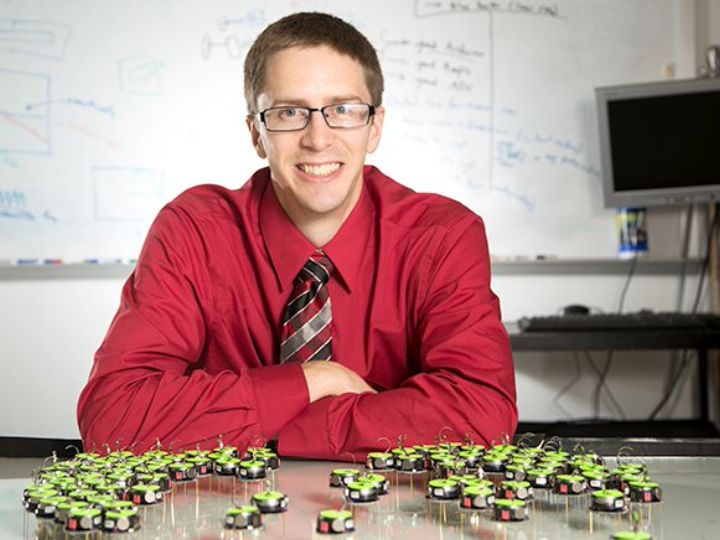

It's a long-held notion, proven in fact, that robots are the perfect instrument to free humans from jobs that are dull, dirty and dangerous – the "3 Ds" in industry speak – with flying robots (drones) leading the way.
As low-cost drones have proliferated worldwide, they are tasked with a variety of objectives, including remote sensing, situational awareness, material delivery and as communication relays. Heady stuff, even military in nature, prompting the deployment of not a single drone at a time, but rather, swarms of drones to complete tasks.
But as their importance and numbers have soared, their swarm mechanics have remained largely dormant. While it is now possible to fly large numbers of drones in sync, these swarms are preprogrammed by teams of animators and are refined with hours of computer simulations.
But what if the drones themselves could respond dynamically to obstacles, vehicles, predators and insect swarms? It's a concept long ago mastered by birds flying in flocks and fish swimming in schools.
"These movements are not pre-programmed but are based on local decisions by individual birds or fish," said Aaron Becker, associate professor of electrical and computer engineering, who is working to refine algorithms to apply those same theories to devise coordinated control of drone swarms to improve their fleet-like delivery of services. His work is supported by the commitment of a $1.7 million grant from Kostas Research Institute at Northeastern University, LLC.
Becker's team includes David Jackson, professor of electrical and computer engineering; Julien Leclerc, assistant research professor of electrical and computer engineering; and Daniel Onofrei, associate professor of mathematics.
"The majority of current research on swarms follows the same pattern and either relies on offline computation or uses simple rule-based logic such as 'don't bump into your neighbor while following the leader.' Computers are great at fast computation and implementing tactics, but humans can excel at strategic decision making. We want to combine these," said Becker.
"We want our swarms to behave optimally yet respond fluidly to changes in the environment. We aim to use computation on drones to locally make smart decisions, relay that information to the operator's computer to make clear visualizations, and let the human operator make high-level decisions."
Two initial application scenarios will be studied. The first scenario is aerial sensing of a forest fire, where the drone swarm must both track the fire and relay communications to firefighters. The second scenario is for aerial security coverage of a commercial facility and campus. Drones must escort vehicles that enter and leave the campus, but each drone has limited battery life and must recharge when batteries are depleted.
It's not Becker's first robot rodeo. With years of experience in studying and developing robots, Becker is now using his expertise to enhance drone swarms. In the past, he has worked on controlling massive swarms of robots and exploring systems where only a handful of instructions were needed to guide large groups of robots to complete tasks.






